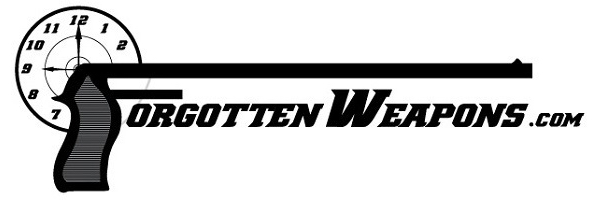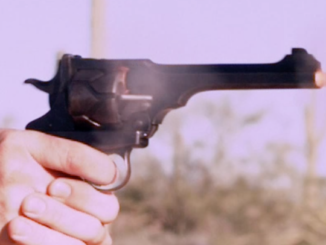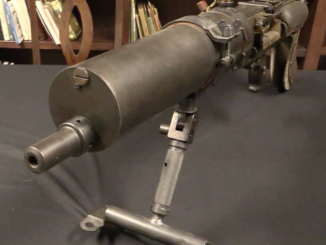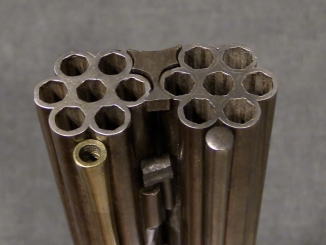Full video with reloading segment and clip solid file available here:
https://forgottenweapons.vhx.tv/videos/ep-11-snider-app
Black powder military rifles of the 1860s-1880s are a really enjoyable group of guns. A lot of them are relatively reasonably priced, and they are actually pretty easy to reload for. The unavailability of factory ammunition (for most, although not so much for the Trapdoor) makes them seem like a daunting prospect, but for a pretty simple investment in tools and time one can make up ammunition and have a lot of fun with rifles like this.
That’s the idea behind a new series here on black powder military rifles. Each month, my friend – and handloader – Tom and I will take out a different model to have some fun at the range and compare how they handle. And then we will show you how to make the ammunition for them. So grab your pith helmet, pause “Zulu” and join us! Today is Episode Eleven: The Snider-Enfield!




I can’t wait to hear Rob Enfield aka Britishmuzzleloader reply to Ian’s “Yuck” comment.
One of the things I keep hoping someone will do with these “transitional” blackpowder weapons would be a full-scale scientific comparison, integrated with the actual drill and tactics used by the adopting armies… Something that would tell us who “got it right” most of all. I suspect that the answer would probably differ greatly every five years or so during the era during which the transition was taking place.
I rather suspect that we’re going to look back on the period 1860-1900 as an era of incredible and entirely unique rate-of-change in technology, one which we’ve somehow simultaneously forgotten and come to believe is the norm.
I would point out the ridiculous goal of the ACR program, which was “100% improvement” in a bunch of very ill-defined criteria. Something I’ll point out that really wasn’t ever a “thing”, unless you’re looking at the 40-year period between my dates above.
I’d love to see some quantified data on just how much this chimeric “lethality” increased between 1860 and 1900… And, just how you’d go about quantifying what the hell that “characteristic” really was.
Such historical study would be important, I feel, because the conduct and methodology of doing so from actual historical data would serve to illuminate the living hell out of the current set of idiocies with things like NGSW. It would also point the way towards rational development programs that take into account things like actual technical improvements in things like propellants, cases, and projectiles.
The data, I feel, is out there. You just have to go out and actually collect it. Yesterday’s post about the Revolutionary War is exactly the sort of thing that needs doing, extrapolated out to the modern battlefield.
There’s a book that sort of already does that;
https://www.amazon.com/Illustrated-Encyclopaedia-19th-Century-Firearms/dp/0861010337
Maj. Fredrick C. Myatt. It looks like a typical “coffee table” book on the outside, but inside it’s a deep dive into the changes in technology and tactics that ran from the smoothbore muzzle-loaders on up to the magazine rifles and the early automatic arms (MGs and pistols).
One of the things he points out is that due to the trajectory of .45 to .58 caliber black-powder rifle rounds, a company commander who knew his business would order his men to hold fire until the enemy was within about 250 yards. At that range, the trajectory of a bullet fired by a kneeling rifleman would never rise above the head height of a standing or running man. It was called the “Throughout” range band and the drill was two volleys followed by “fire at will”.
As Maj. Myatt put it, a smart CO considered the lobbed bullet at a quarter-mile’s range less effective than the devastating punch of the same bullet arriving at chest height from two rugby fields’ length right up to the muzzles of his rifles.
cheers
eon
Damn… Another book I need to buy. Ah, well… The paperback isn’t too expensive.
Seven rounds per minute on average is about right, considering the smoke cloud a close-ranked body of infantry would create, and also the buildup of fouling inevitable even in cartridge arms in black powder days. Not to mention the embarassment of a seriously hot barrel if you suddenly had to present bayonets to a charging enemy. “Them bleedin’ fuzzies don’t care damn all ’bout no bagnets. Seems ter mike ’em eager like!”
Standard drill was to fix bayonets first. In fact, recruits had to learn how the weight of the bayonet on the muzzle changed barrel harmonics and thus trajectory at ranges out to 500 yards.
The breechloading alteration was seen as a positive boon by the PBI. They could finally reload without standing up, or catching their hands on the sawteeth of the Elcho bayonet stuck on the muzzle of the rifle.
As for the tribesmen, if they were fool enough to run up to a rifle line in which every rifle had a pigsticker on the business end, the typical Tommy figured that was their lookout, not his.
😉
cheers
eon
Of course even Kipling had to hand it to the “Fuzzy-Wuzzies what broke a British square.””